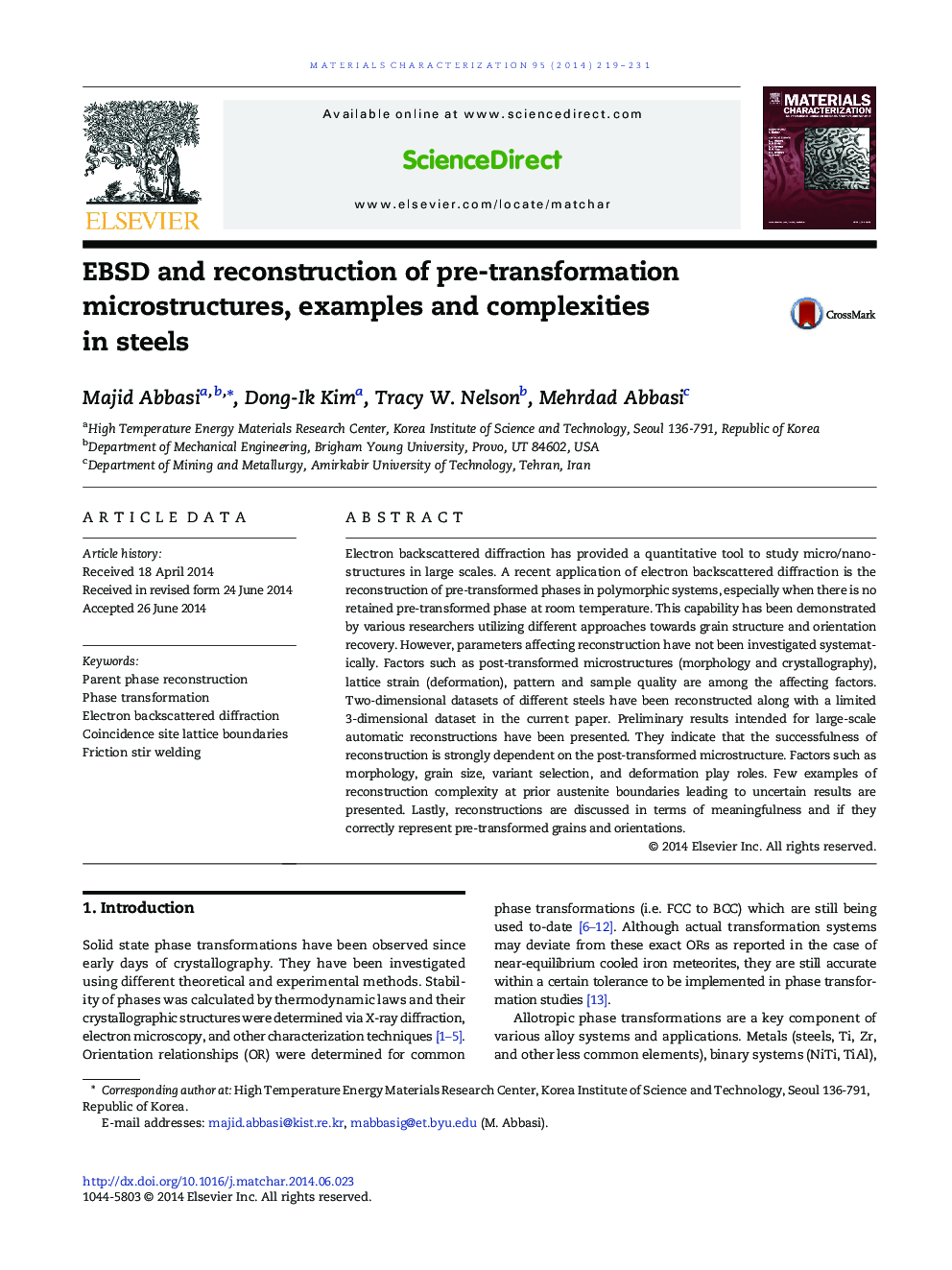| Article ID | Journal | Published Year | Pages | File Type |
|---|---|---|---|---|
| 1571022 | Materials Characterization | 2014 | 13 Pages |
Abstract
Electron backscattered diffraction has provided a quantitative tool to study micro/nano-structures in large scales. A recent application of electron backscattered diffraction is the reconstruction of pre-transformed phases in polymorphic systems, especially when there is no retained pre-transformed phase at room temperature. This capability has been demonstrated by various researchers utilizing different approaches towards grain structure and orientation recovery. However, parameters affecting reconstruction have not been investigated systematically. Factors such as post-transformed microstructures (morphology and crystallography), lattice strain (deformation), pattern and sample quality are among the affecting factors. Two-dimensional datasets of different steels have been reconstructed along with a limited 3-dimensional dataset in the current paper. Preliminary results intended for large-scale automatic reconstructions have been presented. They indicate that the successfulness of reconstruction is strongly dependent on the post-transformed microstructure. Factors such as morphology, grain size, variant selection, and deformation play roles. Few examples of reconstruction complexity at prior austenite boundaries leading to uncertain results are presented. Lastly, reconstructions are discussed in terms of meaningfulness and if they correctly represent pre-transformed grains and orientations.
Related Topics
Physical Sciences and Engineering
Materials Science
Materials Science (General)
Authors
Majid Abbasi, Dong-Ik Kim, Tracy W. Nelson, Mehrdad Abbasi,
